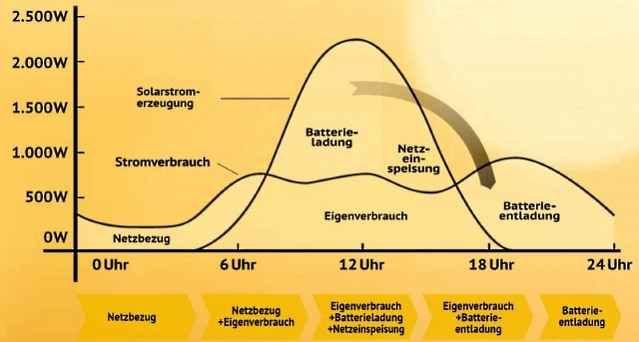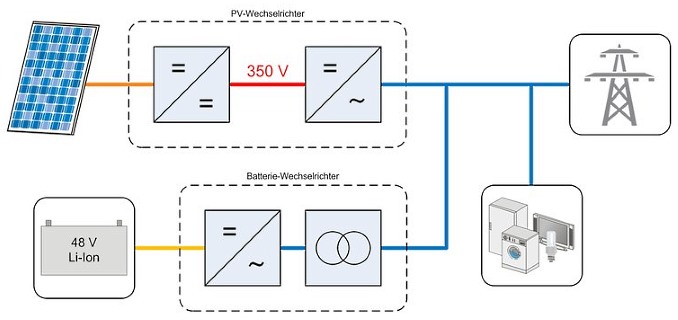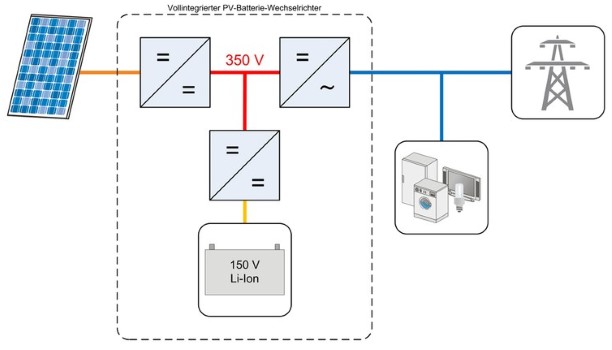No products
Product successfully added to your shopping cart
There are 0 items in your cart. There is 1 item in your cart.
How does a power store work and which is suitable for my house?
Power storage is generally used for two application areas:
1: The current reference / feed-back from the grid is optimized. This means that excess solar energy is charged into the battery during the day and fed back into the house at night to use the own solar current itself. This means that the battery is charged when there is a solar current surplus and if there are current deficiencies, e.g. In the night again from the battery into the home network

2: Emergency power supply in the event of a power failure. The battery feeds the house network via an inverter and thus protects against a power failure with failure of important appliances such as heating, freezers, telephone, etc. High-quality systems feed into the home network on all three phases, the battery is also charged by emergency power and by solar power Can take an infinitely long time.
It is not easy to learn about the battery storage systems for self-consumption optimization and to assess the corresponding systems regarding costs, functionality and performance.
Important features of solar power storage are:
- Nominal capacity of the battery
- Really available battery capacity
- Charge-discharge efficiency of the battery
- Memory technology (lead gel / lithium)
- Emergency power
- Number of phases in emergency operation
- Rechargeability in emergency operation by solar system
- Power of the solar inverter
- Power of battery charger
- Power of the battery inverter
- Efficiency: PV to battery, PV to mains, battery to mains
- Calendar life
- Cycle life of the battery
- mass
- Size
- Environmental risks
- guarantee
- Price per kilowatt hour saved
- delivery
- Manufacturer's references, spare part availability, safety that manufacturer is still on the market in 10 years
Technology platforms
In general, self-consumption systems can be divided into the 3 classes of DC-coupled, AC-coupled and integrated systems.
AC coupled system can be easily retrofitted. There, the alternating current is supplied with a battery charger and the battery is recharged when there is current surplus and vice versa from the battery voltage again generates 230 / 400V alternating current when there is no current.

DC coupled systems can not normally be retrofitted and convert the DC current from the roof into a DC charging current. The battery voltage is then converted into 230 V / 400 V alternating current and fed into the mains.

With the integrated systems everything is housed in a housing and it is not clear exactly how the devices are built up, in the normal case they are DC coupled.
Which technology for you has the most benefits is to judge case by case, let them advise.
Batteries
Normal chemical batteries based on lead-gel or with new lithium technology are used. Staying batteries are cheap and have a smaller cycle and calendar life. Of the installed capacity, only about half can be used, since lead batteries should never be completely discharged. Lithium batteries last up to 20 years and can be charged and discharged almost infinitely. They have a good charging and discharging efficiency and costing you about the stored kilowatt hour approximately half of lead accumulators.
Inverter
Important for the inverters, battery charging devices and DC / DC converters is a high efficiency and a reasonable output so that the generated solar current can also be charged into the battery or at night the consumers can be fed as much as possible.
